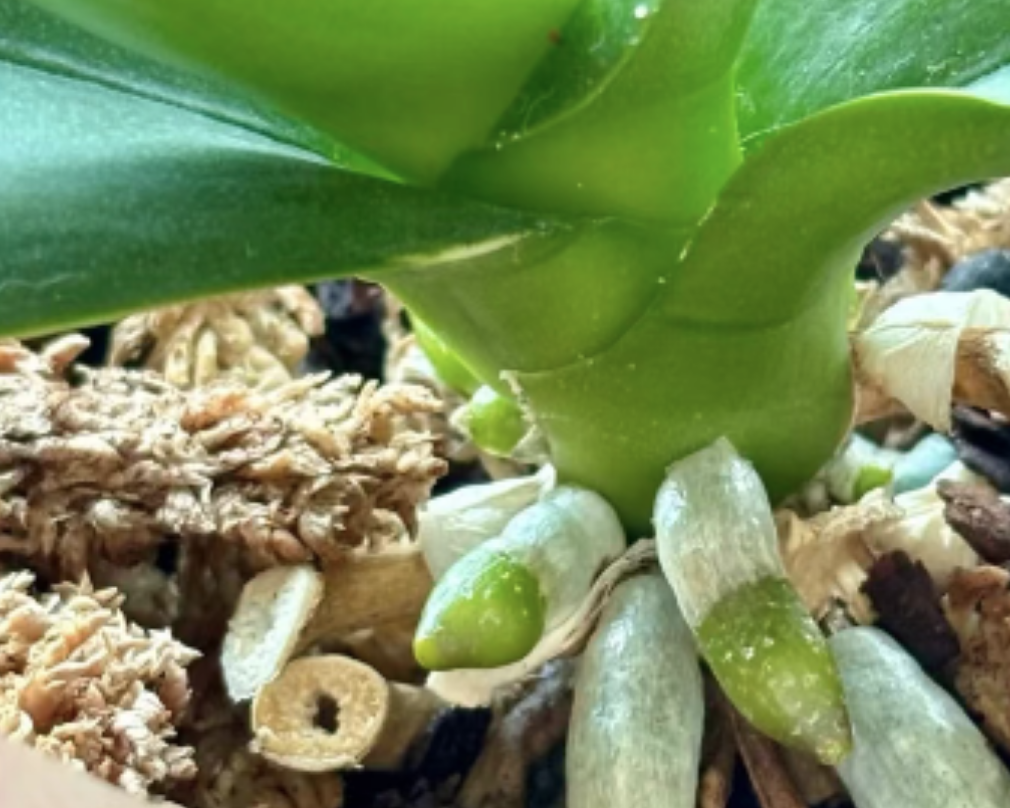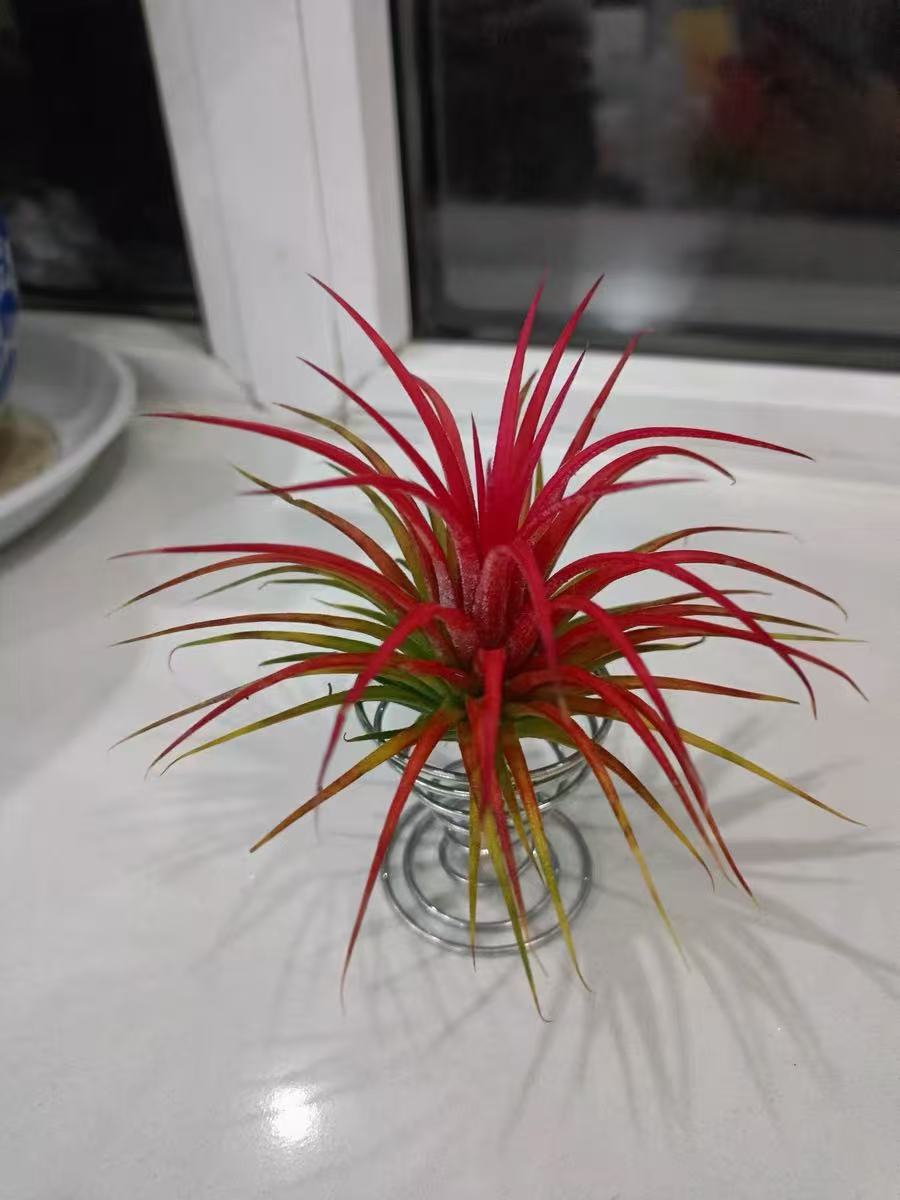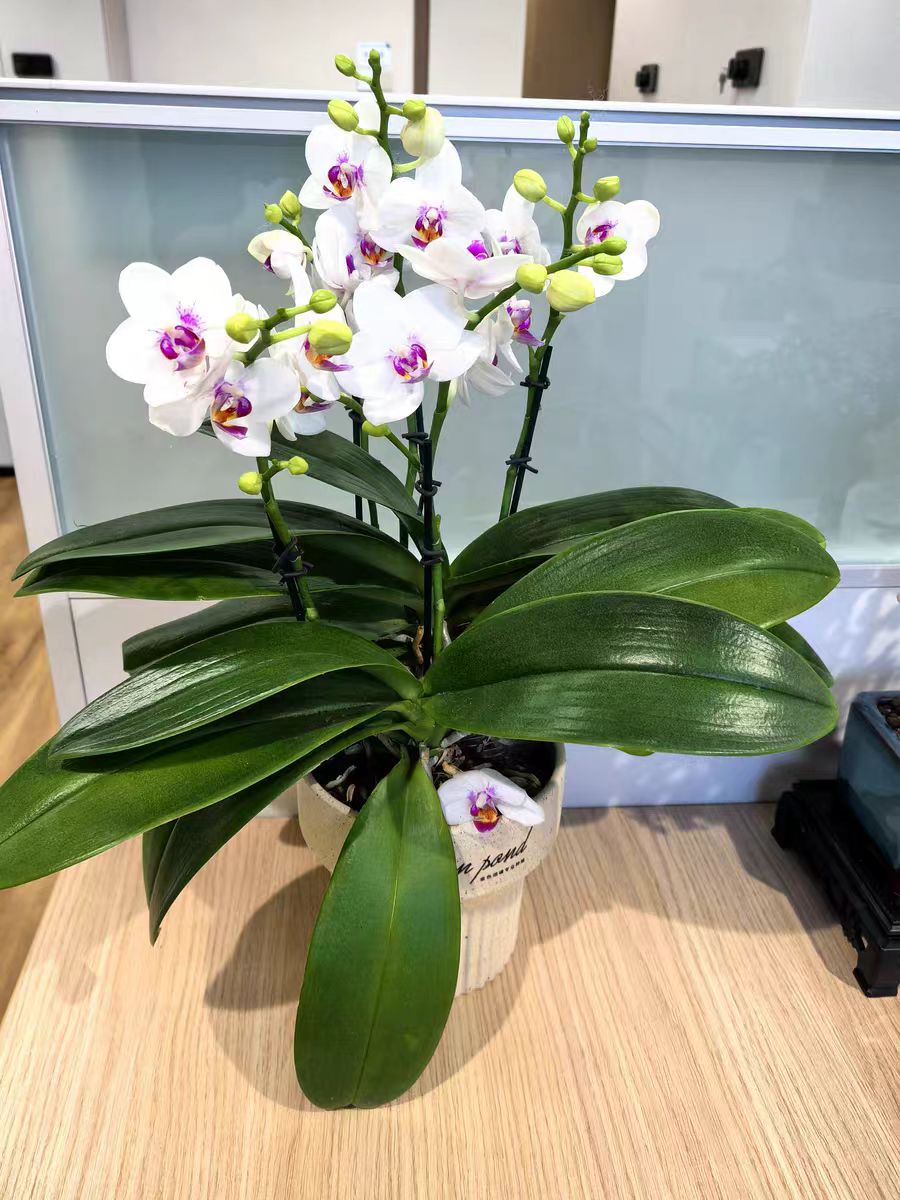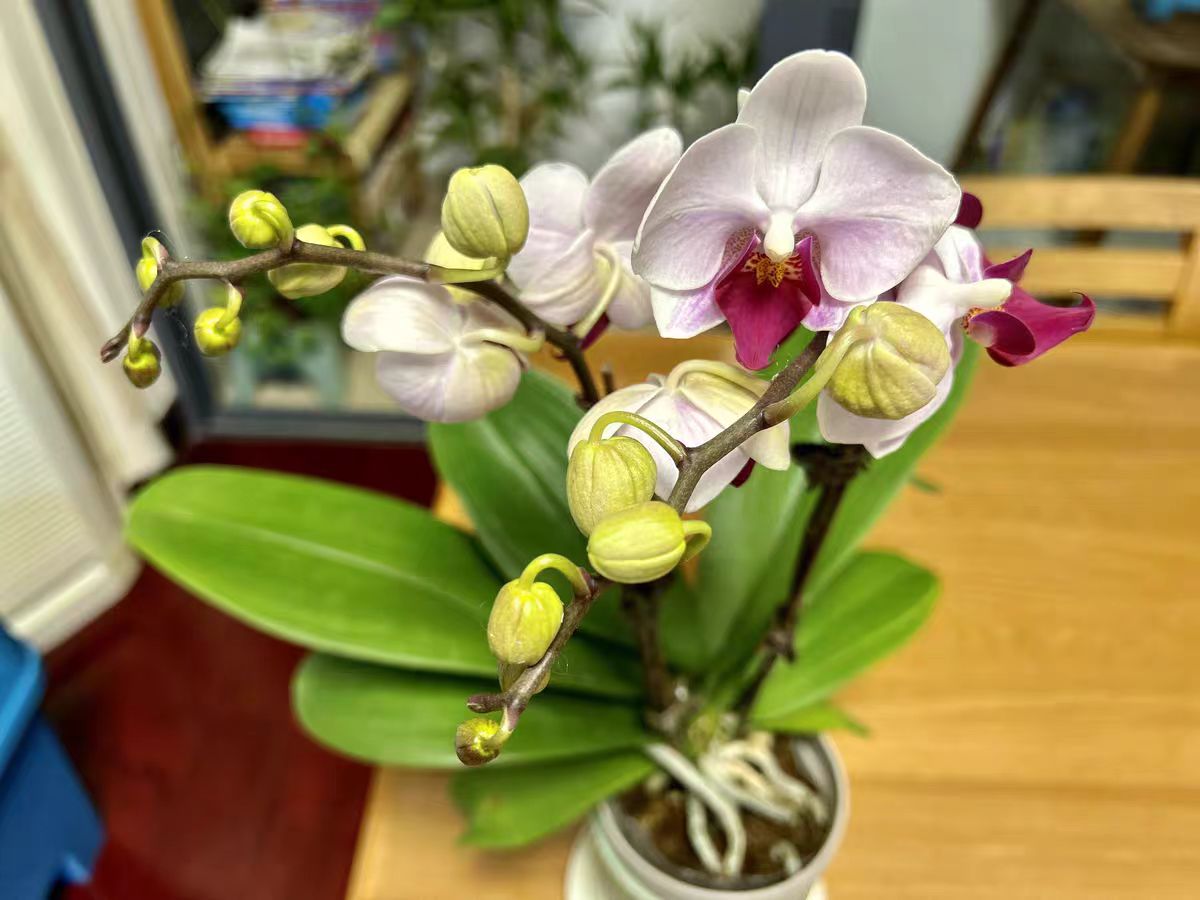It is believed that many people have raised the "Butterfly Orchid", the beauty queen, at home. It is a perennial flower among orchids. As long as you cut the roots after the flowering period and continue to raise it, next year it will grow into a butterfly orchid just like the one you bought home. If you want to know how to cut and cultivate it after the flowering, you can review the regeneration experience of the butterfly orchid I wrote before. Today, let's talk about the difference between the newly grown roots and flower spikes of the butterfly orchid during the cultivation process.
Many flower lovers would say that roots grow downward and stems (flower spikes) grow upward. Aren't they easy to recognize? Actually, no. In some individual native hybrids of roots, they also grow upward and frequently so. Therefore, when distinguishing, you can't simply rely on the direction. At the same time, when the roots and stems are very small, it is indeed difficult to distinguish, but when they grow up, the characteristics of the roots are quite obvious. As long as they are slightly one centimeter long, you can tell at a glance.
Specifically, at the beginning of its emergence, the root will expose the soft and chubby crystal head part, which is very similar to the tip of a ballpoint pen. The back part is green, and there is a very obvious dividing line between the two. However, before the dividing line grows out, the root has no other obvious characteristics for identification. For the stem, when it grows out, it is very short, and then there will be a segmented structure, while the root will not have knots. This is also the easiest way to distinguish the root and the stem in the later stage.
Judging from the growth of the root and the stem, the stem usually grows at the place where the center lines of the leaves converge, while the root can grow anywhere, it can be in the center of the leaf or where the root must grow. Therefore, the growth pattern of the stem can also be used for exclusion.
Finally, in fact, distinguishing the positions of the root and the stem has no reference significance. If your seedlings haven't produced stems yet, don't worry. As long as you do a good job in daily care, place it in a location with scattered light and good ventilation, and the growth temperature is around 18-28 degrees Celsius. Its soil feels comfortable within the range, and it is only a matter of time for it to germinate and emerge.
How to distinguish whether the emerging part of the butterfly orchid is a root or a flower spike?

Share with
Tagged in :




Leave a Reply